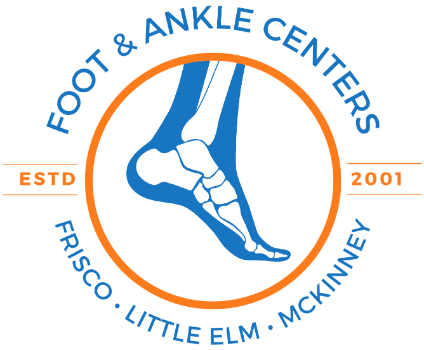Feeling a nagging ache in your heel? at Foot and Ankle Centers
Monday, June 23, 2025 | By: Foot & Ankle Centers of Frisco and Plano
Are you experiencing a nagging ache in your heel? You might be facing a common warning sign from your body: Achilles tendinitis. This condition can worsen without proper care, leading to long-term discomfort and mobility issues. Early signs to watch for include mild pain after walking or running, stiffness when rising from bed, tenderness at your ankle, and swelling around your heel. Addressing these symptoms promptly is essential to preventing further damage and getting back to your daily activities comfortably. In this comprehensive guide, we’ll explore what Achilles tendinitis is, how to recognize its symptoms, preventive measures, treatment options, and tips for recovery. Let’s dive in to help you get back on your feet!
Understanding Achilles Tendinitis
Achilles tendinitis is the inflammation of the Achilles tendon, which connects the calf muscles to the heel bone. This condition often occurs due to overuse, especially among athletes and active individuals. It can develop gradually from repetitive stress or occur suddenly due to an abrupt increase in physical activity.
Common Causes
Achilles tendinitis can stem from various factors, including:
- Overtraining: Increasing workout intensity too quickly without giving the body time to adapt.
- Improper Footwear: Using shoes that do not provide adequate support can lead to strain on the tendon.
- Tight Calf Muscles: Limited flexibility in the calf muscles can place added stress on the Achilles tendon.
- Age: The tendon can lose elasticity and become more prone to injuries as people age.
- Biomechanical Issues: Flat feet or high arches can affect the way stress is distributed across the foot, contributing to tendon strain.
Signs and Symptoms
If you’re wondering whether your heel pain is related to Achilles tendinitis, here are some common symptoms:
- Mild Pain After Activity: This pain may come on gradually with activity and usually resolves after a period of rest.
- Stiffness: Many people report stiffness in the tendon when getting out of bed or after prolonged periods of sitting.
- Tenderness: Touching the back of the ankle may elicit pain, especially where the tendon attaches to the heel.
- Swelling: Inflammation can lead to noticeable swelling around the Achilles tendon.
Diagnosis of Achilles Tendinitis
To diagnose Achilles tendinitis, a healthcare provider will typically perform a physical examination, assessing your symptoms, medical history, and activity level. Imaging tests like ultrasound or MRI may be ordered to evaluate the extent of the injury and rule out any other conditions such as tears or ruptures.
Treatment Options
Achilles tendinitis doesn’t have to lead to chronic pain or limited mobility. Here are several treatment options that can facilitate recovery:
- Rest and Ice: Allow your body time to heal by taking a break from activities that exacerbate your symptoms. Apply ice to the affected area for 15-20 minutes several times a day.
- Nonsteroidal Anti-inflammatory Drugs (NSAIDs): Over-the-counter medications like ibuprofen can help reduce pain and inflammation.
- Physical Therapy: A physical therapist can provide targeted exercises to strengthen the calf muscles, improve flexibility, and promote proper biomechanics.
- Orthotic Devices: Shoe inserts can help support the arch of your foot and reduce strain on your Achilles tendon.
- Corticosteroid Injections: In some cases, a healthcare provider may recommend injections to reduce inflammation, though this is typically reserved for more severe cases.
Self-Care and Prevention
Preventing Achilles tendinitis not only involves treating current symptoms but also implementing strategies to avoid future issues. Consider the following tips:
- Warm Up Properly: Always start with a gradual warm-up before engaging in physical activities. This prepares the muscles and tendons for exertion.
- Stretch Regularly: Incorporate calf stretches into your daily routine to improve flexibility and reduce tension in the Achilles tendon.
- Choose Proper Footwear: Invest in supportive shoes designed for your specific activity type, whether running, walking, or other exercises.
- Gradual Increase in Activity: When increasing physical activity, do so gradually to allow your body time to adjust.
- Cross-Training: Mix up your workout routine with low-impact activities such as swimming or cycling to reduce repetitive strain on the Achilles tendon.
Rehabilitation Exercises
Once the pain and swelling have improved, rehabilitation exercises will become crucial for recovery:
- Eccentric Heel Drops: Stand on a step with your heel hanging off the edge. Slowly lower your heel below the step level, then return to the start position. This strengthens the calf and Achilles tendon.
- Calf Stretching: Stand with your hands against a wall, place one foot behind the other, and lean forward with the front knee bent while keeping the back leg straight. Hold for 15-30 seconds on each side.
- Balanced Movements: Incorporate balance exercises like single-leg stands to enhance stability and strength.
When to Seek Professional Help
While minor heel pain can often be managed with self-care techniques, you should seek professional help if:
- Your pain persists or worsens despite home treatment.
- You experience severe swelling or bruising.
- There’s difficulty in walking or bearing weight on the affected foot.
Living with Achilles Tendinitis
If you find that you have chronic symptoms or flare-ups, it’s essential to understand your limitations and adapt your activities accordingly. Maintaining a healthy lifestyle balance between physical activity and rest will promote healing and prevent new injuries.
Conclusion
Catching early signs of Achilles tendinitis, such as mild pain, stiffness, and tenderness, can be essential to effective treatment and recovery. By incorporating preventive measures and understanding proper footwear, stretching, and exercise routines, you can avoid long-term damage and get back to your active lifestyle.


Leave a comment
0 Comments